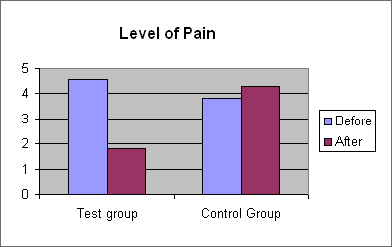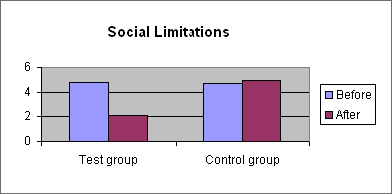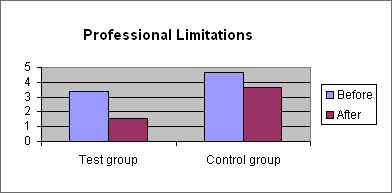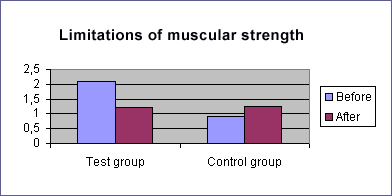Scientific studies
Knee joint
A one-year study of traction treatment for diagnosed knee-joint-osteoarthritis using
Mastercare® Back-A-Traction® - The Swedish Back Care SystemTM
Conducted by: Carpe Diem, Rehabilitation department in Trollhättan, Sweden
Contact persons: Jeanette Soprani, Ann Fager
Project period: Approx. 1,5 year
© Mastercare AB/Nordisk Rygghälsa AB
© Mastercare AB Only to be used for Mastercare products.
Please note: Studies not valid for "similar" products due to the big difference in function and usage.
Background
Traction therapy has been known to be effective in treating osteoarthritis but up till now no tool for such treatment has been accessible to work with that is easy enough to work on your own.Knee-joint plastic surgery has been used as a last resort. But only for people over the age of 60. Since people younger than that are diagnosed with osteoarthritis, it becomes important to find methods of treatment that have a good and lasting effect without resorting to surgical procedure.
At Carpe Diem, a clinic in Trollhättan, there is a continuing project using Mastercare – The Swedish Back Care System. Mostly among patients with neck/shoulder/back problems.
On some occasions, it had shown that people with knee-joint-osteoarthritis had improved considerably with affects of pain relief and increased ability to move. The main idea at Carpe Diem is to find, together with our participants, the individual’s own resources and with that be able to practice self care. The Mastercare is a piece of equipment that a person can use completely on their own after trying it out and getting a few simple instructions on how to use it. In addition, the Mastercare has been placed at 40 workplaces in the city, which makes it possible for their employees to continue their training after the completed project period at Carpe Diem.
From this we wanted to take a close look at this treatment principle. If it could be effective in a wider span, especially for patients with knee-joints-osteoarthritis.
Purpose
- To find a simple form of treatment for people with knee-joint-osteoarthritis at Carpe Diem
- To postpone or altogether avoid knee-joint surgery by reducing pain
- To reduce the number of days of sick-leave
- To be able to increase the walking distance for the patient by reducing pain
- To decrease limitations of the everyday life, professional- and social
Target group
The target group consists of people of working age, diagnosed with knee-joints-osteoarthritis. The extent of osteoarthritis can vary.
Method
All participants, before and after using the Mastercare, had to go through an examination where their strength, endurance, balance, mobility and crepitations (moist rales) and palpation-soreness around the knee-joint were tested They also answered a questionnaire concerning pain and limitations due to the knee-joints-osteoarthritis. The control group went through the same examinations, with a 20-week interval. They were requested to continue to live exactly as before the study. No other measures were taken.
Mastercare – The Swedish Back Care System was introduced according to earlier recommendations by Carpe Diem, see Appendix No. 2. A fitting was done with a physical therapist present on three or more occasions, depending on how fast the participant learned to use the Mastercare. The fitting included technical explanation on how the Mastercare works through practical training. A training program was introduced.
The patient used the Mastercare at home during a 20 week period. The first week, once a day for 2 minutes with 15 degrees inclination. The remaining time twice a day for 5-10 minutes at a time. A training journal was kept daily, see Appendix No. 3.
The participants in the group came in for a control check-up after two weeks. Other than that it was recommended that the participants should contact Carpe Diem if any problems occurred.
Interrupted participation
From the control group, 12 people have gone through examination 1 and 2. Altogether 8 people ended their participation before examination 2. 4 people did not go through the first examination, 4 people stopped before the second. One of these because he had started another treatment and the remaining 7 stopped due to lack of time or some other non-defined reason.
In the test group, 12 people completed both the training and the two examinations. 8 participants were not able to complete the program. 1 was injured by a falling accident which caused tremendous headaches. 1 suffered a meniscus injury in her good knee at her work place and was afraid to continue.
1 experienced that the already unstable knee became more unstable. 2 did not have osteoarthritis but had already gone through the first examination and could therefore not be ”exchanged”. 1 did not have time due to renovations in the home. 1 failed to keep in touch according to agreement but had then already filled a spot.1 experienced problem in the Achilles tendon in connection with the training in the Mastercare.
Results
The results are based on an average value calculated on the 24 people that completed the entire study, both in the control- and test group.
The measures we used, were taken from the VAS (Visual Analogue Scale) that were filled in, and also from the result we received from C. Ekdahls instrument which measures strength.
We have looked at the changes in the degree of pain and strength as well as the limitations in the professional life and the social and daily living.
Improvements occurred on all points for the test group, but also in some cases in the control group, see Diagram 1-5.
Discussion
The study is not considered scientific since The Ethical Research Committee did not approve it, due to the fact that the control group was not offered treatment parallel with the test group. However, we have obtained a result that invites further studies in a larger format.
In the results, the increased walking distance has not been recorded since measurement of this could not be performed correctly. The walking distance is very important both for the patients and the result of the study, therefore, in future studies this will take an important place. However, from the people we measured, we could see that the test group managed a significantly longer distance after completed training. In some cases even running could be performed without problem.
In the study it’s not concluded whether the effect lasts or not when one stops using the Mastercare. It would be of interest to consider that aspect in future studies.
One of the purposes of this study was to reduce the amount of sick days but since the participants were not on sick-leave before the study, this could not be evaluated.
In conclusion, we could say that it appears that we have found a simple way to treat a patient group that earlier were difficult to treat. Furthermore, the patients can take care of the treatment themselves and do not need to be dependent on institutional care, which of course results in economic gain for society.
Diagrams





References
1. Puhl W, Bernau A, Greiling H, et.al. Intra articular sodium hyaluronate in osteoarthritis of the knee: a multicenter, doubleblind study, Osteoarthis and Cartilage 1993; 1:233-41
